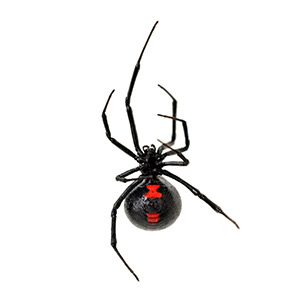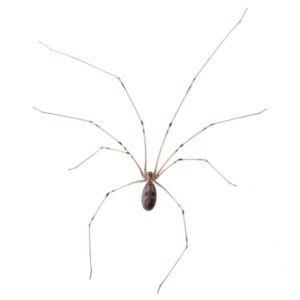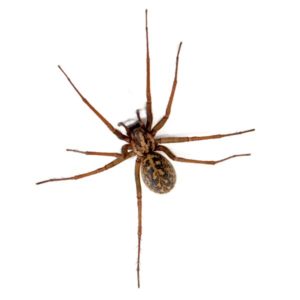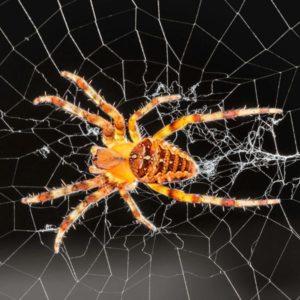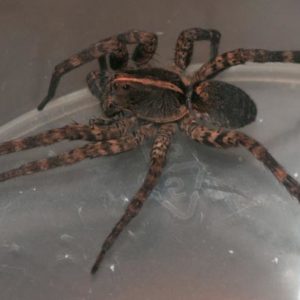Description
| Size | Body, 0.5 in.; Including legs, 1.5 in |
| Color | Female adults are black and shiny with a red hourglass marking on the abdomen; male adults are lighter black or gray in color and feature red and white streaks on the abdome |
| Body Structure | The female features a rounded, globe-like abdomen; the male features a smaller abdomen, yet has noticeably larger biting appendages, or pedipalps, than the female. |
| Characteristics | After mating, females may consume the male as nourishment needed to fertilize her eggs. Eggs are laid in silken, cup-like sacs and are vehemently protected by the female during the gestation period, which can last from 10 days to 1 month. Females can create anywhere from 5 to more than a dozen sacs, each containing up to 750 eggs. Upon hatching, the young spiders are cannibalistic, killing and eating other hatchlings to survive. Only a small number of the young spiders survive and develop into adults. The transformation into adulthood takes 2-3 months. The average lifespan of a black widow spider is 1 year. |
| Habitat & Behavior | Black widows nest in dark, secluded spots, such as within debris, under woodpiles, or in cracks and crevices. The female is extremely protective of her eggs and will bite if her web or nest is disturbed. The spider uses its web to trap prey, which ranges from insects to other spiders. Although the initial bite from a black widow may not cause much discomfort for a human victim, the powerful venom can begin affecting the central nervous system immediately with pain rapidly spreading throughout the body. Vomiting, chills, difficulty breathing, extreme perspiration, palpitations, and delirium are a few of the symptoms that may arise within hours of the bite. Most bite victims recover within a week; however, there is a 5 percent mortality rate associated with black widow bites with most fatalities being children and the elderly. |
| Commonly Active | Spring / Summer / Fall |
| Prevention & Treatment | Moving debris, stacks of bricks, woodpiles, or any other clutter away from your home is a good prevention tool. Sealing cracks in foundations and around doors and windows also are recommended. If working outdoors where black widows commonly nest, make sure to wear protective work gloves. Using foggers or store-bought pesticides to control black widows is not recommended. Apart from being ineffective, the toxins in these products may harm the health of your family and pets if administered incorrectly. If you are concerned about black widow spiders around your home, contact a pest control professional. Find out more about black widow spider control options. |
